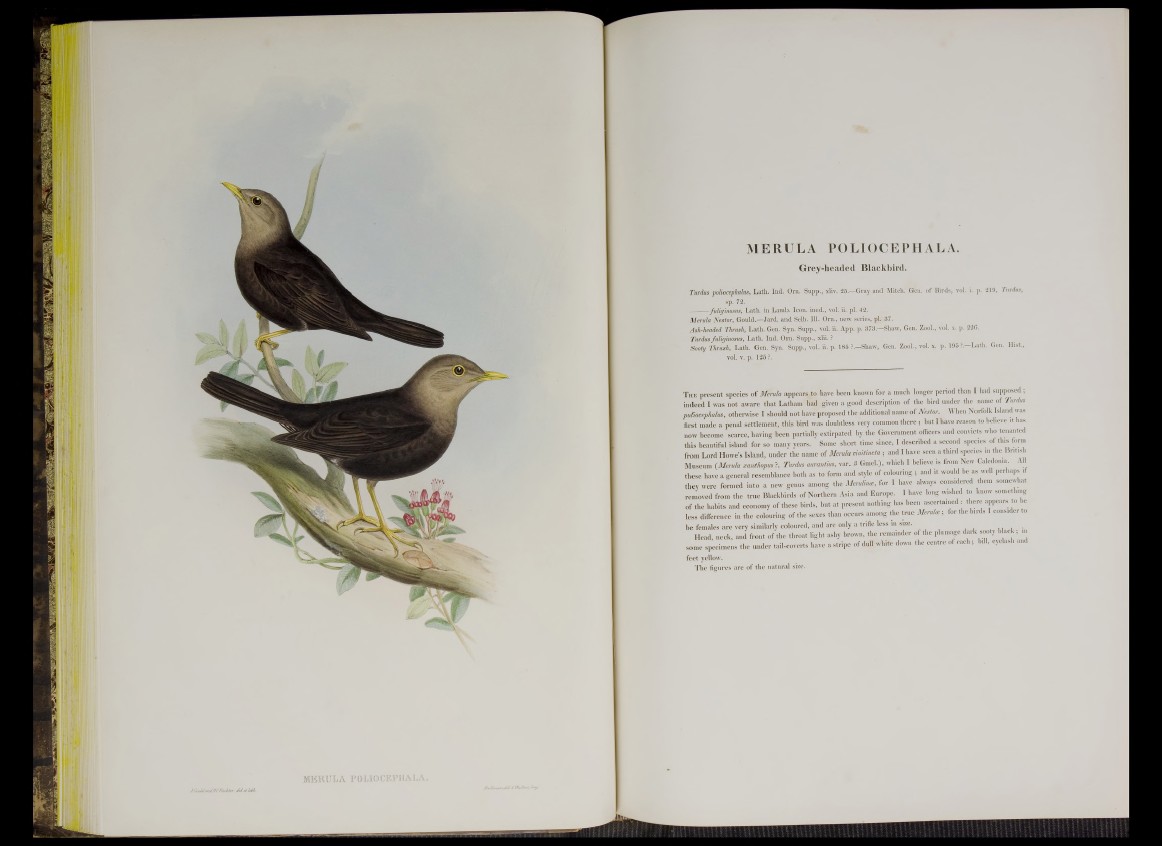
MERULA POLIOCEPHALA.
Grey-headed Blackbird.
Turdus poliocephalus, Lath. Ind. Ora. Supp., xliv. 25—Gray and Mitch. Gen. of Birds, vol. i. p. 219, Turdus,
sp. 72.
--------fuliginosus, Lath, in Lamb. Icon, ined., vol. ii. pi. 42.
Merula Nestor, Gould.—Jard. and Selb. 111. Ora., new series, pi. 37.
Ash-headed Thrush, Lath. Gen. Syn. Supp., vol. ii. App. p. 373 — Shaw, Gen. Zool., vol. x. p. 226.
Turdus fuliginosus, Lath. Ind. Ora. Supp., xlii. ?
Sooty Thrush, Lath. Gen. Syn. Supp., vol. ii. p. 185 ?.—Shaw, Gen. Zool., vol. x. p. 195?. Lath. Gen. Hist.,
vol. v. p. 125 ?.
The present species of Merula appears to have been known for a much longer period than I had supposed ;
indeed I was not aware that Latham had .given a good description of the bird under the name of Turdus
polioeephalus, otherwise I should not have proposed the additional name of Nestor. When Norfolk Island was
first made a penal settlement, this bird was doubtless very common there ; hut I have reason to believe it has
now become scarce, having been partially extirpated by the Government officers and convicts who tenanted
this beautiful island for so many years. Some short time since, I described a second species of this form
from Lord Howe’s Island, under the name of Merula mnitincta; and I have seen a third species m the Britis
Museum (Merula mnthopus ?, Turdus aurautms, var. fl Gmel.), which I believe is from New Caledonia All
these have a general resemblance both as to form and style of colouring ; and it would be as well perhaps if
they were formed into a new genus among the Merulina. for I have always considered them somewhat
removed from the true Blackbirds of Northern Asia and Europe. I have long wished to know something
of the habits and economy of these birds, but at present nothing has been ascertained • there appears to be
less difference in the colouring of the sexes than occurs among the true Merula; for the birds I consider to
he females are very similarly coloured, and are only a trifle less in size. . , .
Head, neck, and front of the throat light ashy brown, the remainder of the plumage dark sooty b ack ; m
some specimens the under tail-coverts have a stripe of dull white down the centre of each ; bill, eyelash and
feet yellow.